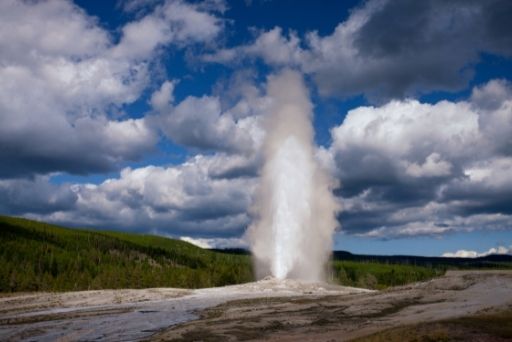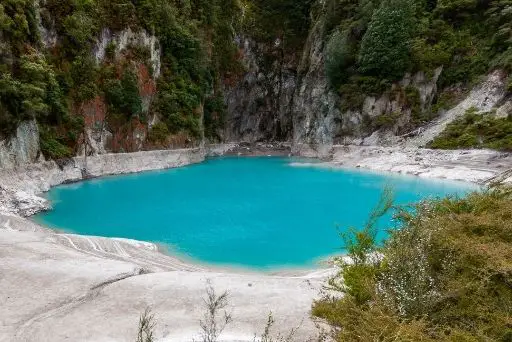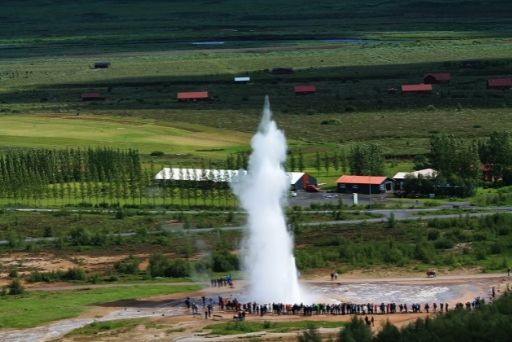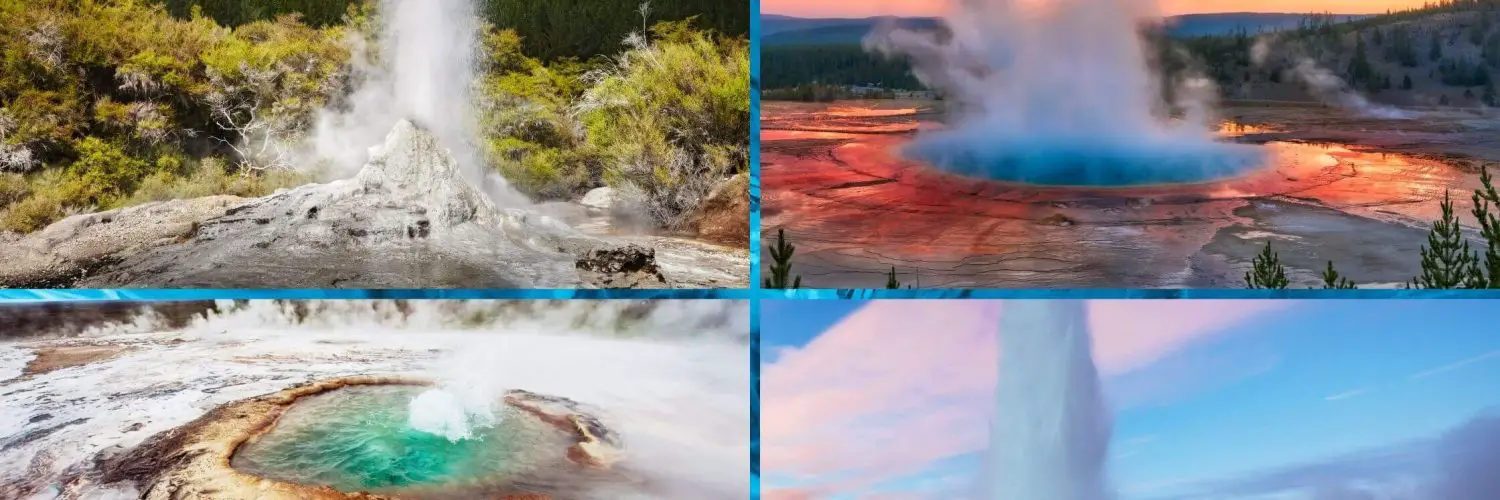Geysers are natural phenomena that we don’t understand very well. They happen when hot water and steam from deep underground, called geothermal energy, rise to the surface. When they reach the surface of the Earth, these gases form a column of boiling water which can be hundreds or even thousands of feet high.
Water is heated in two ways: by contact with rocks below and by the heat given off by radioactive elements such as uranium found inside the Earth’s crust. Geysers exist only where volcanic activity has created a way for these gases to escape to ground level.
The word “geyser” comes from an Icelandic word meaning “to gush.” There are many different kinds of geysers – some erupt regularly while others erupt at intervals of hours or years. Geysers are most often found in places like Iceland and New Zealand, where volcanic activity is expected.
Geothermal hot spots exist worldwide, but only a few are home to geysers, such as Yellowstone National Park in Wyoming, United States; Waimangu Geyser’s Field in New Zealand; and the Great Geysir near Haukadalur, Iceland.
Top world geysers

1) Yellowstone National Park in Wyoming, United States
Yellowstone National Park was home to many geysers because of the volcanic activity during the last major eruption 640,000 years ago. It’s one of only three places on Earth where an entire caldera – a subsidence basin usually caused by a volcano – has been preserved: The other two are in Kamchatka and New Guinea.
The Old Faithful geyser, which erupts every 35 to 120 minutes with an average height of 173 feet (52 m), is named after its regularity and predictability. Another famous geyser at Yellowstone National Park is Grand Geysir, a rare, unpredictable eruption cycle that has lasted from a few minutes to as long as six hours.

2) Waimangu Geyser’s Field In New Zealand
The Waimangu Geysers are located on the slopes of Mount Tarawera, which was created by a volcanic eruption that happened over 1400 years ago. This area is believed to have been home to some of the hottest temperatures ever recorded on Earth: around 190 degrees Fahrenheit (87 degrees Celsius).
The Waimangu Geysers are home to a geothermal cave with steam vents and boiling mud pots heated by the magma below.

3) The Great Geysir Near Haukadalur, Iceland
The Old Faithful geyser in Yellowstone National Park may be the most famous, but the Great Geysir is considered to have been “the first true geyser ever seen.” It was discovered by a farmer named Jon Gnupsson and his son Þorvaldur, who unearthed it while digging a new well.
The Great Geysir erupts every five to ten minutes and can reach up to 200 feet (60 m). It is home to other geysers and hot springs like the Strokkur Geyser, which sprouts boiling water 30 or more times per hour. The geyser is named after the word “geyser,” which means “to gush.” It’s believed that the Great Geysir gave this word its origin.

4) The Maar Geyser In The Eifel
The Maar geysers are home to over 40 hot springs and 12 different types of fumaroles. They were created by a volcanic eruption that happened 5000 years ago near what is now the city of Kall, Germany. One exciting feature of this area is a lake that was created by a volcanic eruption.
It’s called the Maar lake and can be found on top of an open fumarole where it is heated to boiling temperatures – 221 degrees Fahrenheit (105 degrees Celsius) at its hottest point.
The largest geyser in this area, the “Maare Geiserfeld,” covers over 170 acres. It’s estimated that its eruptions can reach heights of up to 600 feet (180 m).
The bottom line
We’re still not entirely sure what’s going on with earth geysers, but we can’t help but be excited by the fact that this has yet to be definitively solved. There are so many possibilities for these large and mysterious holes in the ground-maybe they serve as reservoirs of water? Perhaps they emit hydrocarbons or methane gas? We don’t know yet, but we hope to find out.
It’s incredible that there are still natural phenomena on this Earth that the human mind can only speculate about! It just goes to show how little our minds understand these days.





























